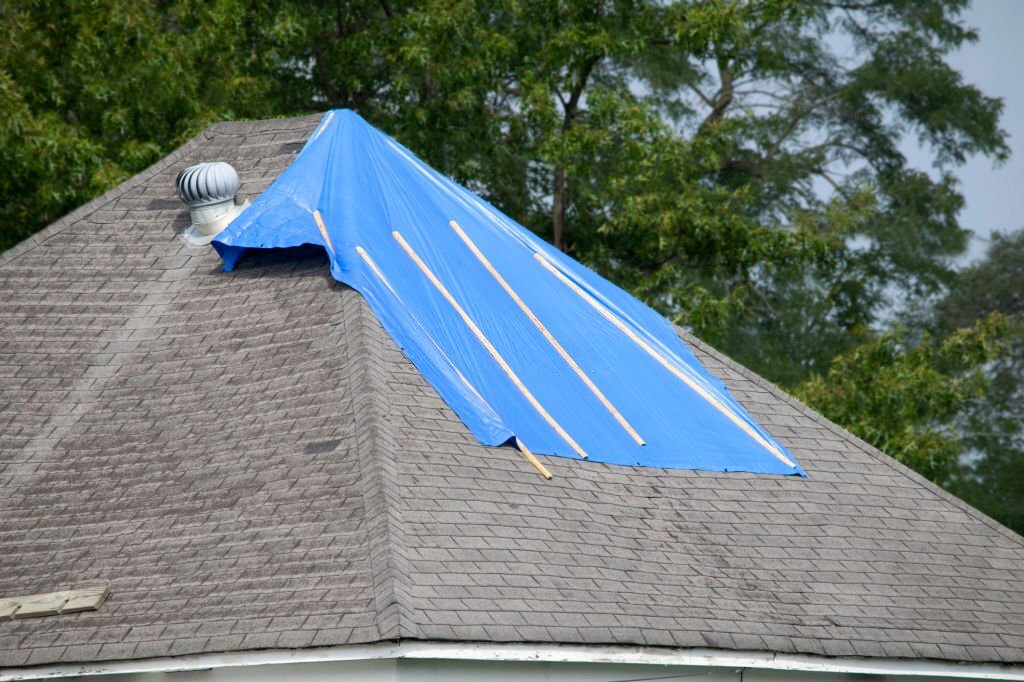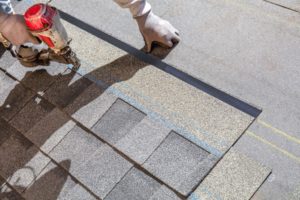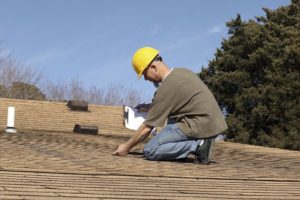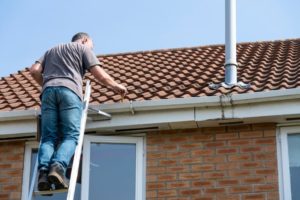If you’re currently battling with a roof leak and you’re looking for a quick and easy fix to stop the leaking roof and minimize damage on your own then you’ve landed in the right place. Dealing with roof leaks can be annoying and frustrating, but you must act quickly to fix a leaking roof to prevent it from developing into a bigger problem and causing more damage to your home.
There might be various reasons why you might want to fix a leaking roof on your own, it can be to save money and handle emergency roof leaks quickly, whichever one it is you have to bear in mind that as soon as you patch up the problem part, you’ve to get in touch with a professional residential roofer who can help you to thoroughly inspect your roof to determine the extent of the water damage, whether you need a further repair to your roof, and to restore the integrity of your roof.
However, here are the 7 quick ways to stop a roof leak and prevent further damage:
- Move your belongings to minimize interior damage
- Contain the water to prevent further damage
- Look for the causes of your leaking roof
- Remove any leaves, debris, or fallen tree limbs
- Use a waterproof tarp or plastic sheet to cover the affected area
- Follow these rooftop safety tips
- Contact a professional roofer right away
7 Quick Steps To Fix a Roof Leak
1. Move Your Belongings to Minimize Interior Damage
The first step towards mitigating a roof leak is to prevent further interior damage by clearing the area beneath the leak. You have to move the furniture and other valuable items away from the area to preserve your belongings and avoid any water damage to your valuables.
2. Contain The Water to Prevent Further Damage
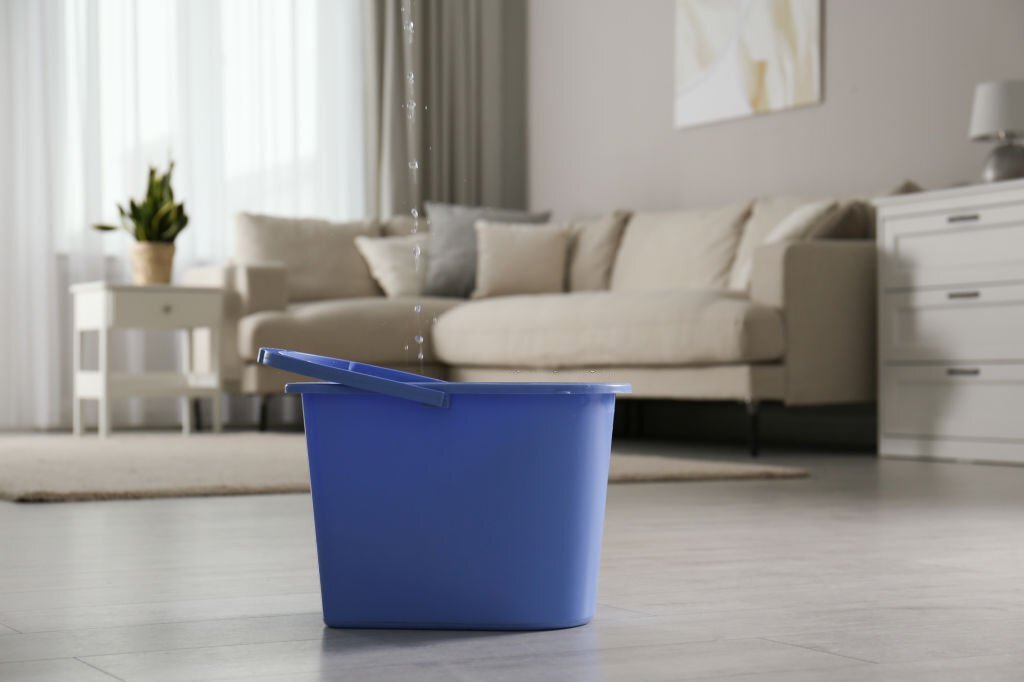
Place a large bucket, pail, or other containers beneath the leak to contain the dripping water and prevent it from falling on absorbent furniture or carpets or spreading into wide areas to cause more damage.
Make sure you pay close attention to the containers as they can fill up faster than you might expect and empty them to keep your home safe and dry.
3. Look for the Causes of your Leaking Roof
The next step is to look for the causes of the roof leak. You can start by investigating the attic or crawl space to be able to track the source of the leak. Keep in mind that water from a leaking roof doesn’t travel in a straight line which can make finding the cause of the leaking roof difficult, but this is a good starting point as it will enable you to know where the water is entering your home from so you can stop the water from reaching your ceiling.
Once you’ve minimized the interior damage, the next step is to go onto your roof to find the cause of the leaking roof. This is only encouraged if your roof is relatively low to the ground and you’re confident and comfortable in doing so. You also need to have the necessary equipment and follow the rooftop safety tips described in step 6 to ensure your safety and prevent causing more damage to your roof.
Here are some potential causes of roof leaks you can look out for:
- Damaged or poorly installed flashings
- Missing or lifted shingles
- Rusting joints or nails along seams between shingles
- Poorly Installed Skylights or Roof Windows
- Damaged roof vents
- Damaged Soffit or Fascia Boards
- Clogged gutters
- Debris on the roof
- Punctures or pooling water
These are the most common causes of roof leaks and what you should look out for when you take a look at the roof from outside of your home or on top of your roof to determine the cause of the roof leaks.
4. Remove any Fallen Tree Limbs, Leaves, or Debris
Trees are very beautiful and improve the home’s curb appeal but an overhanging tree can cause severe damage to the roof. If you notice any fallen tree limbs, leaves, or debris piling up on your roof, you have to remove them and carefully examine the underneath for any potential damage that can result in roof leaks. A fallen tree limb can crack or make a hole on your roof and the best way to prevent that is to prune back your trees and ensure no overhanging tree branches on your roof. Once you’ve cleared the tree limbs or debris, it is crucial to check your gutters to dislodge any blockage caused by the fallen leaves or debris.
5. Use a Waterproof Tarp or Plastic Sheet to Cover the Area
Whether you find missing shingles, tears, or punctures caused by impacts, or pooling water due to improper installation, you need to temporarily repair the affected area to prevent water from getting in.
Using a tarp or plastics sheets to cover the entire area where the leak is coming from or where there is visible damage is a very reliable temporary fix for a leaking roof. These could help to prevent any further leaks (as long as you get an actual roof repair soon after).
With the plastic sheet; you can use them to cover the affected area and fasten them to the roof using roofing nails, or use duct tape to keep it secure so that it won’t blow away and leave your roof susceptible to more damage and leaks.
Using Tarp; tarp is the most commonly used method to temporarily cover a roof leak. Being made with strong and flexible waterproof material, a tarp will protect the affected area by keeping moisture out. To prevent the tarp from blowing away in case of another storm or heavy wind, you have to nail down the edges or use duct tape to keep it secure as with the plastic sheets.
You can also use other methods such as roofing cement, caulk or silicone, and rubber sealant coating to fix cracks, patch holes in your roof, or make other emergency roof repairs.
6. Follow these Rooftop Safety Tips
Before you embark on DIY roof repair solutions, make sure to review and follow these rooftop safety tips to ensure your safety and prevent further damages to the roof.
- First and foremost, If you are uncomfortable with heights or if you’re not confident on a ladder do not climb up on a roof.
- Never go onto a roof alone: Always have someone with you because if there’s an accident of any kind, you need someone there to help.
- Make sure your ladder is in good condition and set it on a firm and level surface. Do not carry heavy loads up ladders and make sure someone holds the bottom of your ladder while you ascend and descend to help keep the ladder stable.
- Always wait until the weather clears up and is no longer rainy, windy, or showing signs of lightning before going onto your roof.
- When going onto the roof, ensure you’re wearing solid shoes or boots with rubber soles so that you don’t slip or fall.
- Wear protective headgear and goggles when going onto a roof and using any materials. If the sun is out, make sure to also wear a long-sleeved shirt and sunscreen to protect you from damaging rays.
- Never work on your roof while intoxicated or taking certain medications that could cause drowsiness.
7. Contact a Professional Roofer Right Away
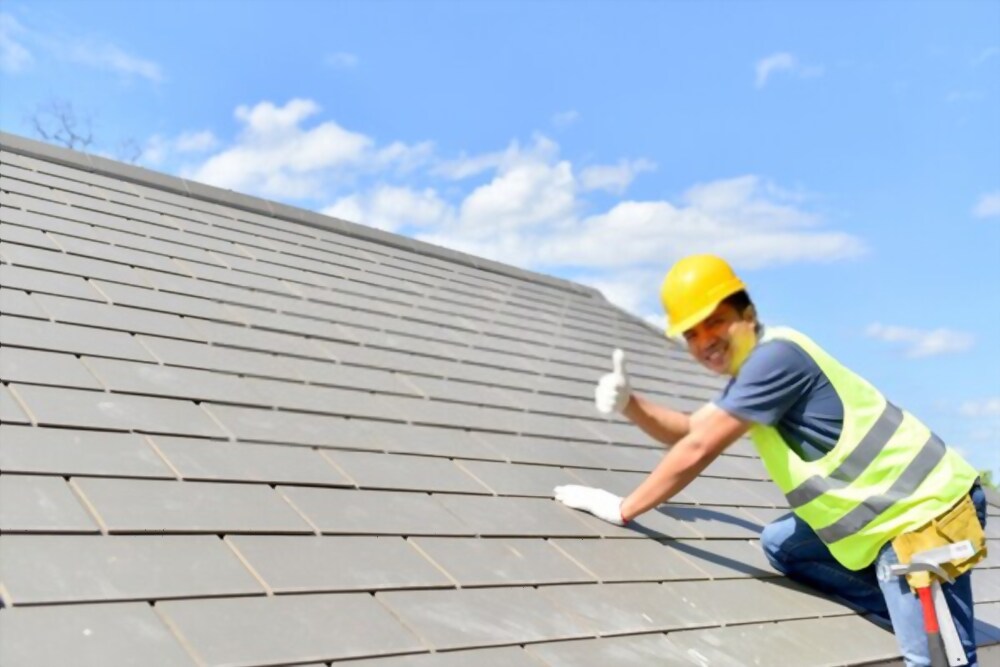
Roofing is strenuous and dangerous work and the best way to not put yourself in harm’s way is to let an expert take care of it. A professional roofer can inspect your roof, assess any damage, and provide you with information on what steps they can take to mitigate the damage and answer any pressing questions you have.
Do You Have A Roof Repair Emergency?
Any roof repair need should be considered urgent but there are a number of specific situations that easily qualify as a roof repair emergency. A tree falling on your roof and smashed a hole into your roof, torn-off shingles from a storm hit, and a fire burning up a section of your roof can all be considered as a roofing emergency. If you experienced any of these issues then you need to contact your local roof contractor or insurance company to see if you’ll need a new roof.
Austin leaking roof repair
If you have a leaking roof in Austin, Texas, or the surrounding areas, or you’re in need of emergency roof repairs make sure to give Roof Royale a call. We’re a local roofing contractor delivering professional roofing solutions and services at reasonable, affordable rates. Give us a call and our roofing experts will be onsite ASAP to assess, estimate, and restore your home’s integrity to the way it was.

